Sort by:
NOTE: Historical systems are not currently available. These systems are presented here as examples of Invocon’s capabilities.
TPMS
Tire Pressure Monitoring System
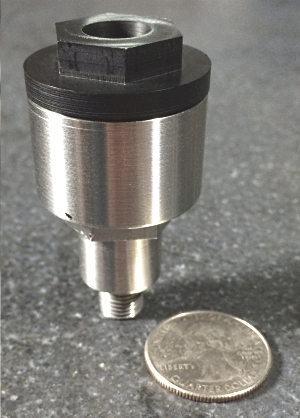
Invocon developed a wireless Tire Pressure Monitoring System (TPMS) for aircraft. TPMS interfaces with smart phones and tablets via Bluetooth Low Energy. It provides the pressure and temperature for each tire on an aircraft without the need for physical contact with the tires. This significantly increases the efficiency of the pilot’s preflight inspection and provides added peace of mind for aircraft crew and owners.
IWIS
Internal Wireless Instrumentation System
Historical
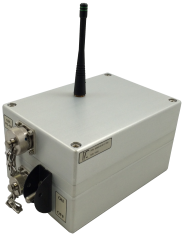
IWIS was deployed by astronauts inside the partially completed ISS to collect data on the impulse response of the structure. This data is used to verify the structural integrity of the ISS on orbit. It has also been used to update models predicting the modal response of the ISS. Complete understanding of the resonant modes of the structure allow for effective planning for re-boost events. Since this data changed as the Station was assembled, it was important to keep this data current with each addition to the Station.
The wireless nature of the data acquisition network minimizes the time necessary for deployment and recovery of the system. Further, some of the reaction control system (RCS) test firings occurred when all airlocks between modules were closed. A wired system would not have the flexibility needed to accommodate mission changes and data acquisition windows of opportunity.
EPC
Electronic Power Conditioner
Historical
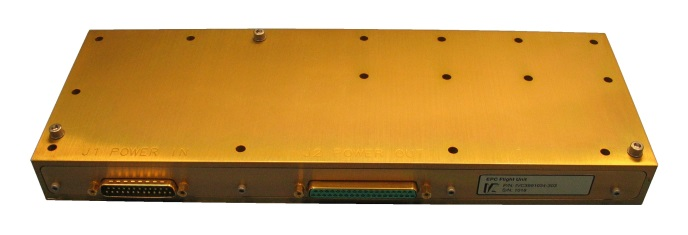
Invocon designed, manufactured, and qualified the Electronic Power Conditioner (EPC) for a commercial satellite program. The EPC provides power for the RF Power Amplifier under the control of a Power Amplifier Controller. The system is designed with radiation tolerant components to provide 10 years of reliable operation in the space environment.
PAIB
Power Amplifier Interface and Bias
Historical
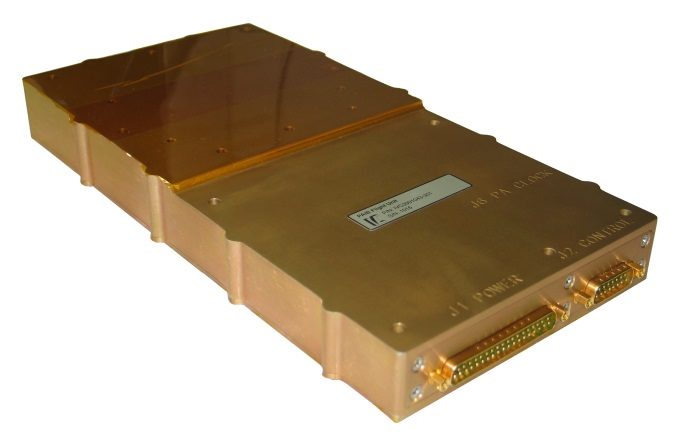
Invocon designed, manufactured, and qualified the Power Amplifier Interface and Bias (PAIB) for a commercial satellite program. The PAIB provides three functions for the RF Power Amplifier: power amplifier control, power amplifier monitoring, and power amplifier bias. The system is designed with radiation tolerant components to provide 10 years of reliable operation in the space environment.
REBR-W
Re-Entry Breakup Recorder – Wireless
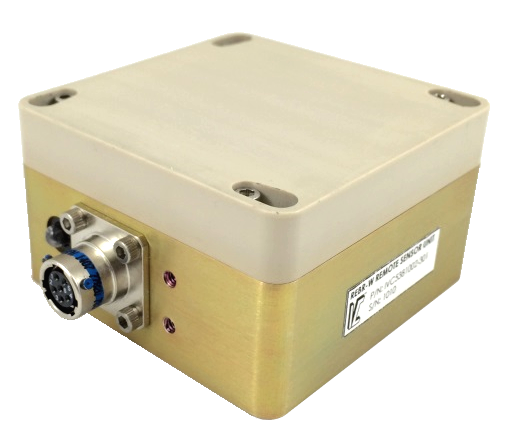
Invocon produced a wireless temperature system that was incorporated into the Reentry Breakup Recorder (REBR), a design that was conceived and constructed by The Aerospace Corporation engineers. REBR is a basketball-sized device that is launched into orbit aboard a larger spacecraft and then intentionally deorbited when a host spacecraft returns to Earth. The REBR gathers data as its host vehicle reenters and transmits the data to the ground for analysis.
The data can be used for reentry hazard prediction studies, reducing risks, improving planning for spacecraft that eventually must deorbit, and generally expanding our understanding of reentry breakup and related phenomena. The new REBR-W (wireless) is an enhanced version of this capability that utilizes remotely mounted units with high temperature sensors that are located throughout the host spacecraft. The remote sensors measure and transmit temperature data from various locations on the reentering vehicle to the REBR-W unit, which stores and later transmits the data to the ground. Invocon’s responsibility was defining, producing, and testing a suitable system solution that could be used effectively with REBR on various spacecraft that dock with the International Space Station and later reenter Earth’s atmosphere and burn up.
PCA
Power Control Assembly
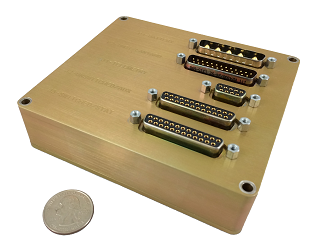
Invocon’s Power Control Assembly (PCA) provides complete power control for small launch vehicles in a robust miniature package. The PCA controls two 28-V power sources for use with four power output channels. It is intended to seamlessly switch between an external power control system and an on-board battery. It supports battery charging in order to simplify vehicle maintenance prior to launch. Power outputs include two switched 28-V channels, one un-switched 28 V channel, and an auxiliary 5-V channel.
Click here to learn more about the PCA System
CDI
Capacitive Discharge Initiator
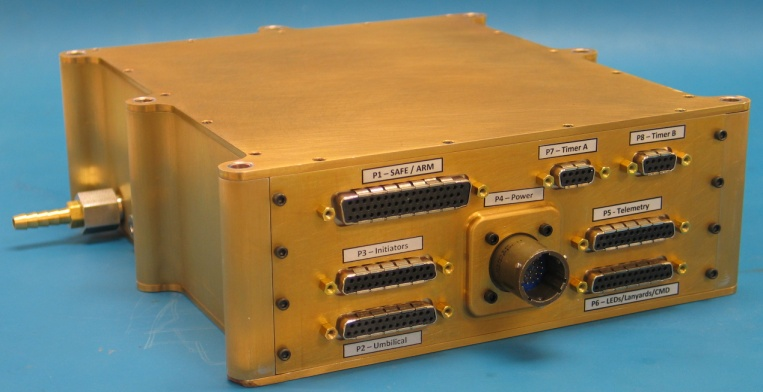
Invocon’s Capacitive Discharge Initiator (CDI) Module provides missile control and monitoring capabilities in a single compact unit. It enables safe operation and monitoring of ordnance.
The CDI provides four fully redundant output channels, a single input trigger for starting the timer, 1-ms resolution per channel, and four hours of run-time after the input trigger.
Click here to learn more about the CDI system.
EWIS™
External Wireless Instrumentation System
Historical
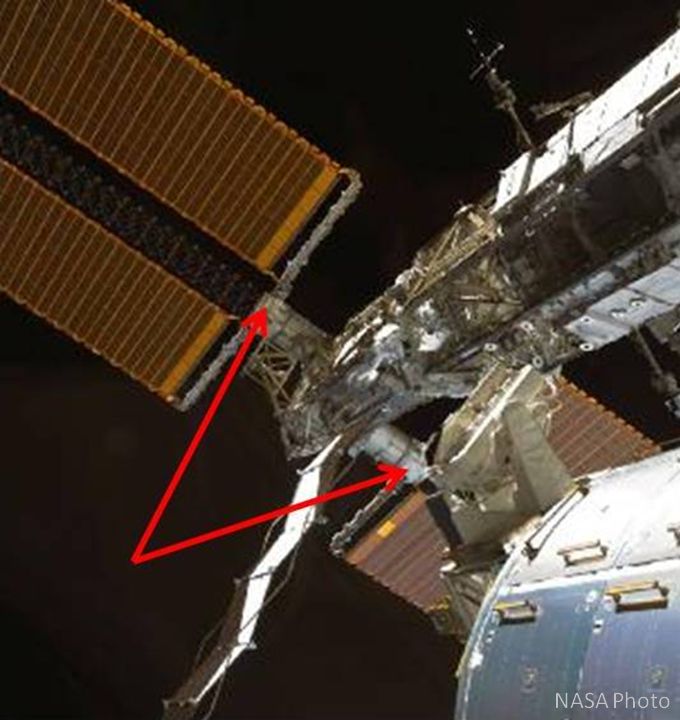
Developed to provide long-term structural dynamics measurements of the International Space Station (ISS).
EWB MicroTAU™
Enhanced Wide-Band Micro-Miniature Tri-Axial Accelerometer Unit
Historical
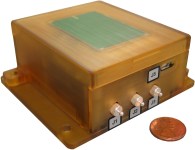
Wireless, high-speed, synchronized data acquisition network for dynamic acceleration sensing, processing, and recording. Post acquisition download is either USB or wireless.
Features:
- 20-kHz Sample Rate
- 3 External Accels per unit
- Processing: RMS Signal Analysis, Frequency Analysis, Decimation, Peak Detection, et al.
- Approximate Size: 7.0 cm x 3.8 cm x 8.3 cm
Click here to learn more about the EWB MicroTAU system.
MicroWIS™-XG
Micro-miniature Wireless Instrumentation System – Next Generation
Historical
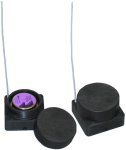
A real-time asynchronous wireless transmission system. Immediate graphical representation and
storage on a PC.
Features:
- 1/hour–0.25 Hz Sample Rate
- 1 channel per unit
- 100 units per system
- The units can support any resistive sensor type.
- Approximate Size: 3.3 cm x 3.3 cm x 1.5 cm replaceable battery unit
Click here to learn more about the MicroWIS-XG system.
MITE WIS™
Multiple-Input Tiny Enhanced Wireless Instrumentation System
Historical

A real-time and/or store-and-forward system capable of recording data from up to four channels on 2-MB non-volatile memory (enough for 2 years at 1 sample per 5 minutes, with 4 channels). Post-acquisition download is wireless to a receiver and GUI. Designed for two-year usage without battery exchange.
Features:
- Sample Rate: Programmable from 1 per 15 seconds, up to 1 per hour
- Lifetime: 2 years at 1 sample per minute
- Approximate Size: 6.0 cm x 6.3 cm x 2.5 cm (excluding antenna)
- Up to 4 external channels per unit
- The units can support any resistive sensor type.
Click here to learn more about the MITE WIS system.
Multi-Channel Event Sequencer
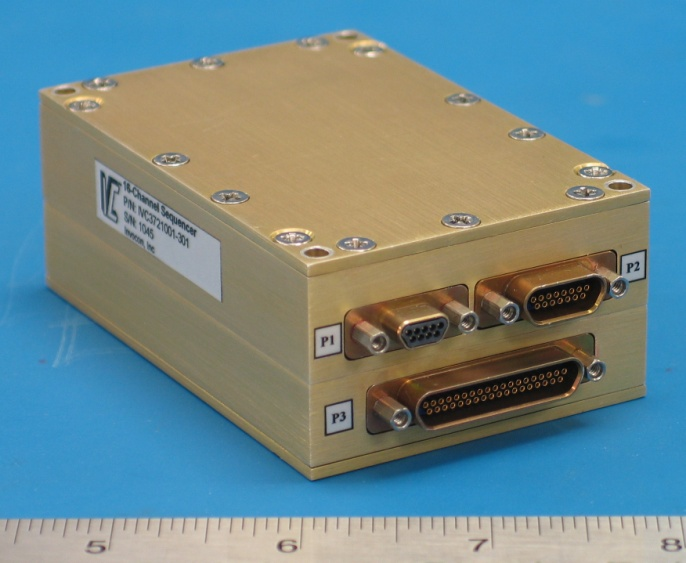
Invocon’s event sequencer is a flight qualified solution for monitoring and initiating flight events.
It includes 8 channels of open drain outputs for assertion of timed events via relays or other devices. Each channel provides up to 3 A of current. The voltage level available at the output is equal to the sequencer’s input voltage (20 V to 40 V). The event timer is triggered by a single input trigger. Each channel can be programmed independently with a timed event resolution of 1 ms for a period of up to 4 hours after the input trigger.
Click here to learn more about the Multi-Channel Event Sequencer.
Smart Battery
Lithium Ion Polymer Smart Battery
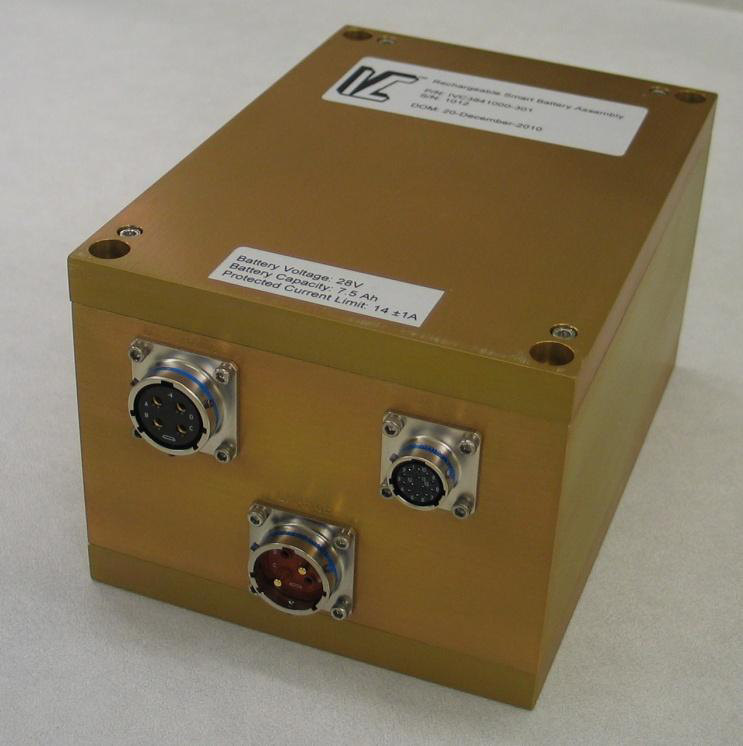
The Invocon 28-V Rechargeable Smart Battery uses modern lithium ion polymer battery technology. Lithium ion polymer batteries have one of the highest energy storage and power delivery densities (per weight) of modern batteries. This enables longer operation between charging and dependable operation of high current electrical loads or inrush currents without startup sequencing.
The Invocon Smart Battery is designed for mission critical applications. Custom circuitry, without single point of failure, provides uninterruptable power discharge for mission critical applications. This feature is enabled with an external “Flight Enabled” key and latched against unintentional release to provide full battery power delivery without overcurrent or temperature disconnect.
Click here to learn more about the Invocon Smart Battery
WEBDAS™
Wireless Ethernet-Based Data Acquisition System
Historical
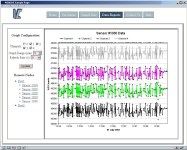
This system enables the use of existing Ethernet hardware and Web-based IT resources for the configuration, acquisition, transmission, and display of sensor data from extremely low-power RF sensors.
Click here to learn more about the WEBDAS system.
WSGIS™
Wireless Strain Gauge Instrumentation System
Historical
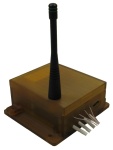
Programmable initiation triggers over a 10-minute acquisition and non-volatile storage. Post-acquisition download is either USB or wireless.
Features:
- 20-kHz Sample Rate
- 4 External Resistive Transducer channels per unit
- 4 External low-speed RTD channels per unit
- Approximate Size: 7.0 cm x 3.8 cm x 8.3 cm (not including flanges or antenna)
Click here to learn more about the WSGIS system.
ACI
Advanced Capabilities Initiative
Historical
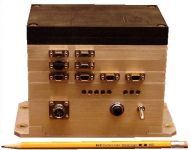
Designed to autonomously perform user-developed algorithms on the remote unit and periodically transmit the results through the network. Specifically designed for Condition-Based Maintenance (CBM) applications.
Features:
- Up to 200-kHz Sample Rate
- Up to 16 sensors per unit
- 32+ units per system
- The units can support any capacitive, resistive, or voltage sensor type
- Approximate Size: Expandable from 13.7 cm x 8.9 cm x 10.8 cm
Click here to learn more about the ACI system.
ADDS
Autonomous Dynamic Data Sensor
Historical
Experimental data gathering and recording of environments on and around on-orbit vehicles. The data was used to evaluate the effects of the external environment on structures and flight dynamics.
Click here to learn more about the ADDS system.
Advanced MicroWIS™
Advanced Micro-Miniature Wireless Instrumentation System
Historical
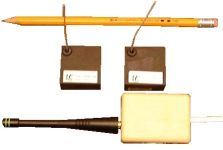
A real-time asynchronous, analog-to-digital system that wirelessly transmits data for graphical representation and storage on a PC.
Features:
- 20-Hz Sample Rate
- 1 channel per unit
- 5 units per system
- Approximate Size: 3.3 cm x 3.3 cm x 1.5 cm replaceable battery unit
Click here to learn more about the Advanced MicroWIS system.
AIRNET
Aircraft Integrity Radio Network Evaluation Technology
Historical
A multi-sensor system for in-flight aircraft performance evaluation. An intra-aircraft wireless network collected the data for automatic downloading to ground receiving stations during flight.
- Sample Rate: Programmable from 4.8 Hz to 1 kHz
- Approximate Size: 10 cm x 14 cm x 4.5 cm
Click here to learn more about the AIRNET system.
BodyLAN
Historical

A multi-unit wireless pulse and breathing rate detection system.
Internal electronics acquired data from the external optical deflection pressure sensor, performed analyses, and transmitted the pulse and respiration rate information. A real-time mode transmitted raw data to the receiver.
Features:
- 1 external optical deflection pressure sensor for pulse and respiration monitoring
- Sample Rate: 64 Hz and 512 Hz (Respiration and Heart Rates Respectively)
- Approximate Size: 5 cm x 5 cm x 2 cm
Click here to learn more about the BodyLAN system.
CIS
Conformal Ice Sensor
Historical

Developed for Boeing’s efforts on the Joint Strike Fighter to detect ice formation on de-icing boots on the aircraft engine intake. The sensor can determine both the presence and type of ice formation.
Click here to learn more about the CIS system.
ELMWIS™
Extended-Life Micro-Miniature Wireless Instrumentation System
Historical
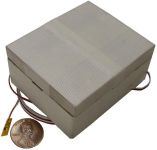
A real-time and/or store-and-forward system capable of recording 1 year of data onto non-volatile memory (at 1 sample per minute) with a wireless download. Designed for 10-year usage without battery exchange. Also capable of networking between units.
Features:
- 1/day–1/(15 seconds) Sample Rate
- 1 channel per unit
- 50 units per system
- The units can support any resistive sensor type.
- Approximate Size: 7.0 cm x 5.9 cm x 3.1 cm
Click here to learn more about the ELMWIS system.
ESBAWM
Entire-Ship Ballast Autonomous Wireless Monitor
Historical
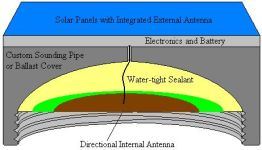
ESBAWM will monitor and log ballast exchanges in oceanic cargo vessels. Multiple Ballast Monitoring Units (pictured) are mounted atop ballast sounding pipes and periodically monitor the ballast levels.
These units then pass ballast activity through a wireless network to the Ship Data Collection and Location Unit that logs the ballast activity and respective GPS location information. As the ship approaches shore an automatic wireless download and internet transport can alert port authorities to potentially contaminated ships before they enter port.
Click here to learn more about the ESBAWM system.
GPSCON
Global Positioning System Interface Controller
Historical
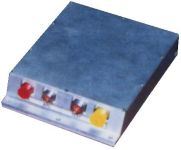
Served as the interface between TANS and the Wake Shield Facility (WSF) recording GPS information and translating messages between the two external devices. The GPSCON was part of a high priority Risk Mitigation Experiment (RME1311) for Relative Global Positioning System (RGPS) navigation flight.
Approximate size: 20 cm x 5.7 cm x 29 cm
Click here to learn more about the GPSCON system.
MicroSAFE™
Micro-Miniature Stress Analysis and Forecasted Endurance
Historical
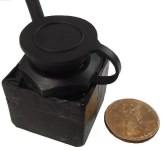
Performs the ASTM Rainflow Cycle Counting Algorithm in real-time as it acquires strain data. Performs continual Rainflow analysis on site without the need for large data storage mediums or post-processing.
Features:
- Sample Rate: 32 Hz
- 1 external channel per unit
- The units can support any resistive sensor type
- Approximate Size: 2.5 cm x 2.5 cm x 3.0 cm (pictured external battery unit)
Click here to learn more about the MicroSAFE system.
MicroSGU™
Micro-Miniature Strain Gauge Unit
Historical
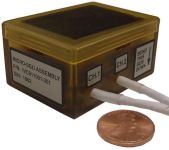
Programmable initiation triggers a single acquisition event. Capable of recording on to non-volatile memory up to 13 minutes of data from each channel for post-acquisition wireless download.
Features:
- 250-Hz Sample Rate
- 2 external sensors per unit
- The units can support any resistive sensor type
- Approximate Size: 5.5 cm x 4 cm x 2.8 cm
Click here to learn more about the MicroSGU system.
MicroTAU™
Micro-Miniature Tri-Axial Accelerometer Unit
Historical
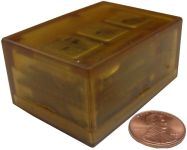
Programmable initiation triggers for two consecutive acquisition events. Capable of recording to non-volatile memory up to 9 minutes of data from each channel for post-acquisition wireless download. Multiple units can be programmed for synchronous acquisition.
Features:
- 250-Hz Sample Rate
- 3 Internal tri-axial sensors per unit
- Approximate Size: 5.5 cm x 4.0 cm x 2.8 cm
Click here to learn more about the MicroTAU system.
MicroWIS™-CO2
Micro-Miniature Wireless Instrumentation System for Carbon Dioxide Measurement
Historical
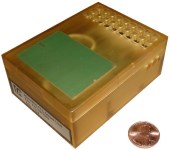
A wireless data acquisition system for near-static CO2 measurements. The sensor element uses a Non-Dispersive Infrared Diffusion (NDIR) method for measurement.
Features:
- Sample Rates: One sample per 15 minutes, 30 minutes, 1 hour, or 2 hours
- Accuracy: ± 200 ppm or 5% of reading, which ever is greater
- Battery Lifetime:
- 166 days at 1 sample per hour and 2 minute warm-up
- 34 days at 1 sample per hour and 10 minute warm-up
- Approximate Size: 3.5 cm x 6.4 cm x 8.6 cm
Click here to learn more about the MicroWIS-CO2 system.
MicroRecorder™
Micro-Miniature Data Acquisition Recorder
Historical
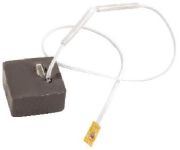
An autonomous store-and-forward data recording system. 128kbytes of non-volatile memory can store over one month of data (at 1 sample per minute) with a wired download. Programmable acquisition initiation.
Features:
- 1/hour–1/second Sample Rate
- 1 channel per unit
- The units can support any resistive sensor type
- Approximate Size: 3.3 cm x 3.3 cm x 1.5 cm replaceable battery unit
Click here to learn more about the MicroRecorder system.
MicroWIS™
Micro-Miniature Wireless Instrumentation System
Historical
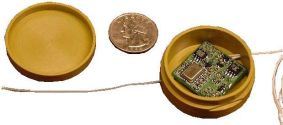
A real-time asynchronous wireless transmission system. Immediate graphical representation and storage on a PC.
Features:
- 1 channel per unit
- 100 units per system
- The units can support any resistive sensor type
- Sample Rate: 1/hour–0.25 Hz
- Approximate Size: 3.3 cm x 3.3 cm x 1.5 cm replaceable battery unit
Click here to learn more about the MicroWIS system.
MMA
Micro-gravity Measurement Apparatus
Historical
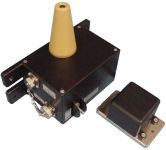
MMA constantly monitors micro-vibrations in the International Space Station. MMA will help correlate any anomalies in micro-g experiments with ISS vibrations.
Features:
- External Tri-Axial Accelerometer
- Sample Rate: Programmable up to 1.2 kHz
- Resolution: Better than 2 micro-g
- Accuracy: Better than 10 micro-g
Click here to learn more about the MMA system.
PSAW
Programmable Surface Acoustic Wave Correlator
Historical
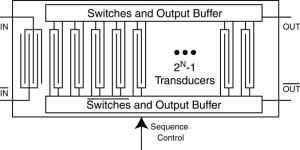
Invocon has teamed with NASA and Sandia National Labs to develop an ultra low power Direct Sequence Spread Spectrum (DSSS) radio based on a programmable Surface Acoustic Wave (PSAW) correlator.
The PSAW will perform the primary function of the down converter, demodulator, and baseband processor in a conventional (DSSS) receiver, but with no power consumption. The correlator forms a passive matched filter for symbol detection and possibly symbol generation.
Click here to learn more about the PSAW project.
SCAT
Sensor Control and Acquisition Telecommunications (SCAT)
Historical
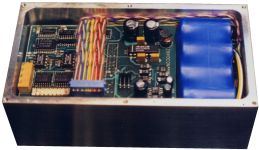
NASA Johnson Space Center (JSC) sponsored Invocon’s development of “next generation” data acquisition and communications networking concepts to be deployed in, on, and around space structures under construction.
Click here to learn more about the SCAT system.
SIGHT
Site Inspection of Gas Mains by Helical Tomography
Historical
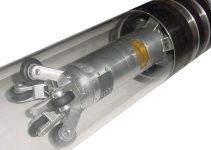
A robot developed to internally map the wall thickness of pipes, forming a tomogram image of the cross-sectional area of the pipe.
Click here to learn more about SIGHT.
SMES
Wireless Data Acquisition system for Structural Monitoring and Evaluation
Historical
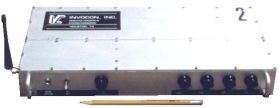
Designed for the U.S. Department of Transportation to measure the performance of bridge structures under transient loads. Up to 60 sensors on a bridge can measure stress/strain, vibration, and temperature.
Click here to learn more about the SMES system.
RAID
Radiation Alert Immediate Device

Invocon’s Radiation Alert Immediate Disclosure (RAID) device is a real-time active radiation badge with wireless communication capability. RAID is designed to simplify radiation monitoring for personnel and equipment. It accomplishes this by providing real-time feedback of the radiation environment and by using simple interfaces.
Features:
- On-board processing provides immediate feedback
- Measures deposited energy
- Distinguishes between Alpha, Beta, and Gamma *
- Wireless communication enables simple set up and data retrieval
- Real-time user feedback:
- Activity/Error LED indicates when RAID is in monitoring and
- communicating or when an error condition exists
- Alarm LED indicates that a user-selectable threshold has been exceeded
- Small size and weight simplifies integration
REMS
Radiation Environment Monitor for Spacecraft
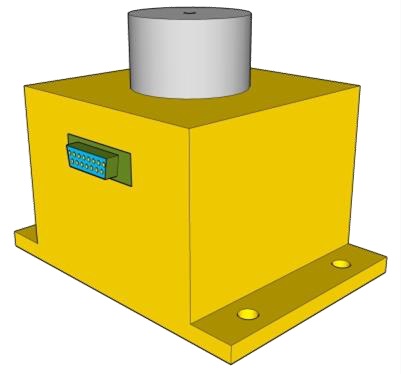
Invocon’s Radiation Environment Monitor for Spacecraft (REMS) is a real-time active radiation monitor designed for mounting externally on spacecraft. REMS is designed to simplify radiation monitoring for satellites and other vehicles for scientific data collection as well as root cause analysis for anomalous behavior. It accomplishes this by providing real-time feedback of the radiation environment and by using simple interfaces.
Features:
- On-board processing provides immediate feedback
- Distinguishes between Alpha, Beta, and Gamma *
- Low power minimizes host requirements
- Small size and weight simplifies integration
TMS™
Tension Measurement System
Historical
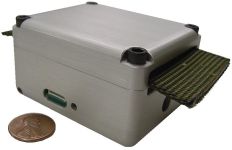
A data acquisition system that monitored the performance of nylon dispersion bridles of a parafoil under transient loads, specifically to be used in parachute drop tests for the X38 vehicle preliminary flight tests. The TMS data acquisition units measure tension on the dispersion bridles and ambient temperature data on the parafoil structure.
Features:
- Sample Rate: Programmable to 10 Hz and 50 Hz
- 1 channel per unit
- The units can support any resistive sensor type
- Approximate Size: 7 cm x 5 cm x 4 cm
Click here to learn more about the TMS system
UltraWIS™
Ultrasonic Wireless Instrumentation System
Historical
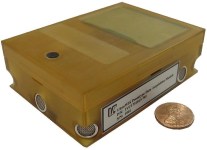
Invocon is currently in Phase II of a NASA Small Business Innovation Research (SBIR) program to assist in locating leaks within pressurized spacecraft with minimal expenditure of vehicle or crew resources. The UltraWIS units monitor an entire habitation structure as part of a network of ultrasonic sensors.
Features:
- 8 Ultrasonic sensors per unit
- Sample Rate: 100 kHz
- Approximate Size: 5.0 cm x 5.0 cm x 2.5 cm
Click here to learn more about the UltraWIS system.
UVOSPS
Un-tethered Velocity of Sound Profiling Sensor
Historical
Invocon has recently begun a Phase II Department of Defense (DOD) Small Business Innovation Research (SBIR) program to assist the US Navy in measuring the water column sound velocity. The sensor system is a stack of miniature probes that are periodically released to sink and send both temperature and depth back to the host-buoy.
Click here to learn more about the UVOSPS project.
VMMS
Video Micro Movement Sensor
Historical
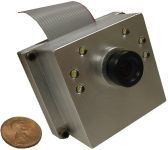
A camera for testing and inspection. The camera can take still pictures intended for periodic inspections or operate as a video camera to detect movement. At a distance of 2 feet, the camera can track movement of a target to within 1 mm.
Features:
- Video Frame Rate: 60 Hz
- 1 CMOS active pixel image sensor per unit
- Approximate Size: 4.4 cm x 5.4 cm x 3.2 cm
Click here to learn more about the VMMS system
WAIS™
Wireless Airborne Instrumentation System
Historical
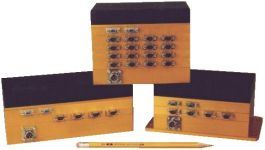
A real-time, highly synchronous analog-to-analog or analog-to-pseudoPCM networked system. Programmable sample rates, filters, offsets, and gains on all inputs. Synchronization between samples on remote units is ± 300 ns.
Features:
- Up to 12-kHz Sample Rate. Aggregate system throughput is 86k Samples per Second
- Up to 16 sensors per unit
- Up to 8 units per system
- Maximum 64 channels per system
- Modules can support resistive, capacitive, and voltage sensor types
- Approximate Size: Expandable from 13.7 cm x 8.9 cm x 7.7 cm
Click here to learn more about the WAIS system.
WATS™
Wireless Autonomous Telemetry System
Historical
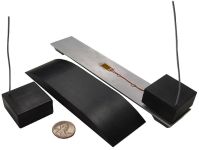
A real-time, synchronous, analog-to-digital system that wirelessly transmits data for graphical representation and storage.
Features:
- 20-Hz Sample Rate
- 1 channel per unit
- 5 channels per system
- The units can support any resistive sensor type
- Approximate Size: 3.3 cm x 3.3 cm x 1.5 cm replaceable battery unit
Click here to learn more about the WATS system.
WB MicroTAU™
Wide-Band Micro-Miniature Tri-Axial Accelerometer Unit
Historical
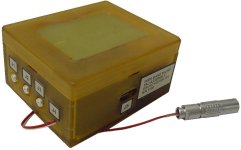
Programmable initiation triggers over a 10-minute acquisition and non-volatile storage. Post acquisition download is either USB or wireless.
Features:
- 20-kHz Sample Rate
- 3 External Accels per unit
- 1 External RTD per unit
- Approximate Size: 6.9 cm x 5.3 cm x 3.3 cm
Click here to learn more about the WB MicroTAU system.
WCCN
Wireless Command and Control Network
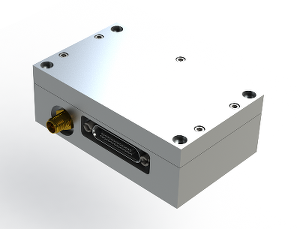
The WCCN system is a highly-configurable wireless network for monitoring and distributing logical signals between remote locations. Originally designed to control the activation and triggering of remote cameras, the WCCN units have 19 digital input/output channels. Each channel can be configured as an input, input with pull-up, output, or LED sink.
Features:
- Configureable via USB
- Rugged enclosure with filtered connector for aviation applications
- Internal Lithium Polymer Battery supports > 1 day of continuous low-latency operation
WDAS
Wireless Data Acquisition System
Historical

A “smart” wireless network flown as a Development Test Objective (Program RME1330) on two Shuttle missions. This system served as a foundation for future Shuttle and ISS systems.
Click here to learn more about the WDAS system.
WFCS
Wireless Flight Control System
Historical
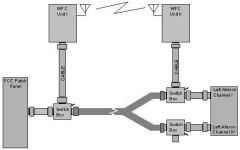
A proof-of-concept system to control of aircraft with radio frequency links between the pilot controls and the flight control surfaces on the wings. The requirement involved the design of suppressed carrier, spread spectrum, high redundancy, data links that could be demonstrated first on a ground-based test bed and later flown on a NASA research aircraft.
Click here to learn more about the WFCS system.
WIS™
Wireless Instrumentation System
Historical
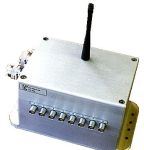
A high accuracy and resolution data acquisition system that transmits data and configuration information wirelessly. Unit-to-unit start of acquisition is synchronous up to ± 300 ns. Adaptive configurable routing.
Features:
- Programmable Sample Rates: 4.5 Hz to 1 kHz, or 12-hour to 2-second sample periods
- Up to 64 channels per unit
- Approximate Size: Expandable from 9.0 cm x 15 cm x 11 cm
Click here to learn more about the WIS system.
WISP
Wireless Instrumentation Sensor Processor
Historical
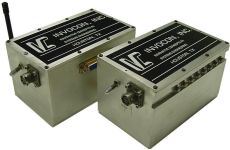
Designed to gather and process data from airframes that would be used to predict failures in critical airframe structures. The processing uses complex, real-time, mathematical transformation that must differentiate normal airframe behavior from the behavior of the structure containing the flaw.
Click here to learn more about the WISP system.
WSDS
Wake Shield Data Acquisition System
Historical
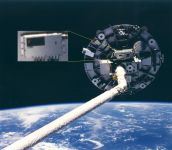
Developed to gather pressure experienced on the surface of the satellite when the RCS (Reaction Control System) jets on the Shuttle were fired during rendezvous and grappling operations.
